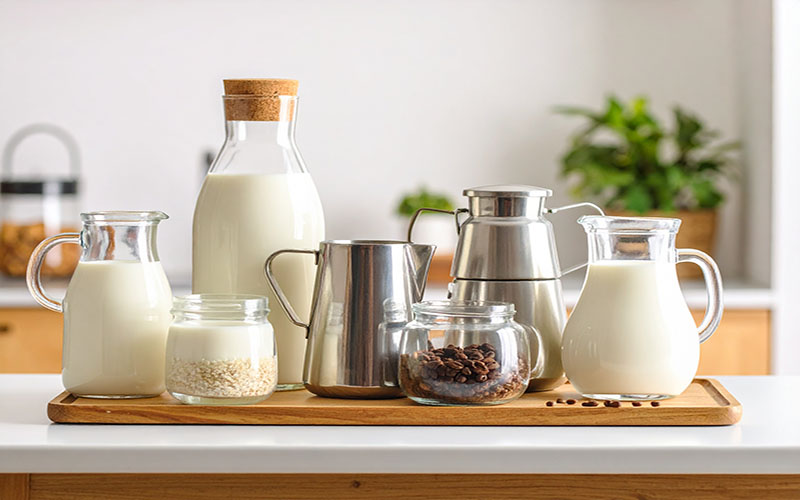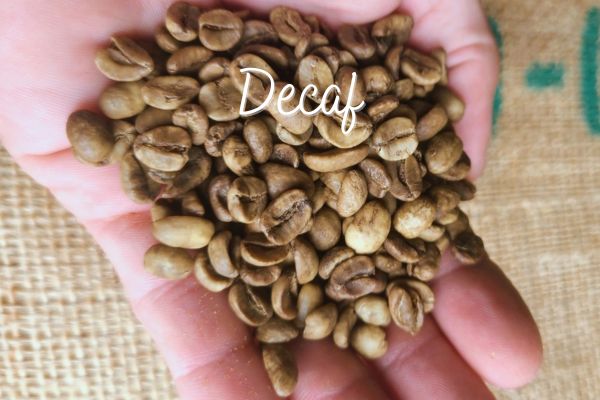
A Barista's Guide to Milk Alternatives
From oat to almond, soy to coconut, this guide explores the best milk alternatives for coffee. Learn how they steam, what they taste like, and how to pair them for the perfect cup.
The Rise of Plant-Based Milks
The demand for milk alternatives has exploded in recent years, driven by dietary restrictions, ethical choices, and a desire for new flavor experiences. For coffee lovers, this means a whole new world of possibilities beyond traditional dairy. However, not all milk alternatives are created equal when it comes to coffee. A good alternative must not only taste great but also have the right texture and stability to complement the espresso without curdling or overpowering it.
Here's a barista's take on the most popular options and how they perform.
1. Oat Milk: The Crowd Favorite
- Taste: Naturally sweet, creamy, and mild. It's the most similar to dairy milk in terms of taste and texture.
- Steaming Performance: Excellent. Oat milk (especially "barista blend" versions) creates a beautiful, velvety microfoam that's perfect for latte art. It's stable and resists curdling.
- Pairing: Its neutral flavor profile makes it incredibly versatile. It pairs well with almost any coffee, from a light, fruity single-origin to a dark, chocolatey blend.
2. Almond Milk: The Low-Calorie Classic
- Taste: Can have a nutty, slightly bitter flavor. Sweetened versions are common to balance this out.
- Steaming Performance: Can be inconsistent. Almond milk has a tendency to separate or curdle when it hits the acidic espresso. Barista blends are more stable, but the foam is often lighter and more bubbly than oat milk.
- Pairing: The nutty flavor can be a delicious addition to medium and dark roasts with nutty and chocolatey notes. It can sometimes clash with the delicate acidity of lighter roasts.
3. Soy Milk: The Original Alternative
- Taste: Distinct, beany flavor and a creamy texture.
- Steaming Performance: Very good. Soy milk was the original king of dairy-free foam and steams into a thick, stable microfoam.
- Pairing: The strong flavor of soy milk can be polarizing. It works best with dark, robust roasts that can stand up to its flavor. It can be an acquired taste, but it has a loyal following.
4. Coconut Milk: The Tropical Twist
- Taste: Pronounced coconut flavor and a rich, creamy body.
- Steaming Performance: Decent, but can be tricky. It can create a good foam, but it's often thinner and dissolves more quickly than other alternatives.
- Pairing: The distinct coconut flavor makes this a specialty pairing. It's delicious in mochas, iced lattes, and with coffees that have tropical or chocolatey flavor notes. It's less suited for those who want the coffee's origin flavor to shine.
5. Other Noteworthy Alternatives
- Macadamia Milk: Incredibly rich and creamy with a buttery, nutty flavor. It steams beautifully and is a luxurious (though often expensive) option.
- Cashew Milk: Very creamy with a mild, neutral flavor. It performs well in coffee but is less common in cafes.
- Rice Milk: Thinner and more watery, with a subtle, sweet flavor. It does not steam well and is generally not recommended for hot coffee drinks.
What is "Barista Blend"?
You'll often see "Barista Blend" or "Barista Series" on cartons of milk alternatives. These versions have been specifically formulated for coffee. They contain added fats, proteins, and emulsifiers (like gellan gum or locust bean gum) to help them steam into a stable, creamy microfoam and prevent them from curdling in hot, acidic coffee. If you're serious about making lattes at home, these are always worth the extra cost.


